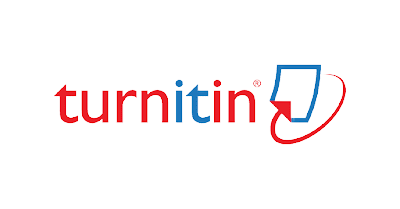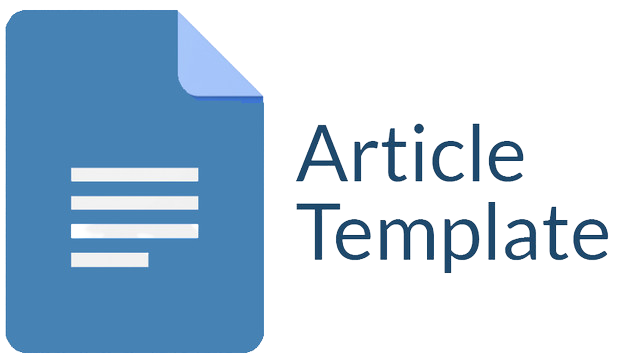SIMULATION AND PERFORMANCE ANALYSIS OF HIGH-EFFICIENCY MULTILEVEL BOOST CONVERTER
Abstract
This research aims to optimize the efficiency of the boost converter with a cascaded technique to increase efficiency with a more complex circuit, using two Boost Converters assembled in series and two PWM signals so that the circuit performance is more stable. The method used in this research is to compile a circuit with suitable components and calculations designed and then optimized using mathematical and differential analysis and select the switching frequency (40KHz) that gives the best performance in the circuit, then simulate the cascaded boost converter and regular boost converter circuits in MATLAB Simulink with duty cycle variations from 5%-76% to compare the performance of the two topologies in improving efficiency. The results of testing the efficiency showed that the cascaded boost converter circuit has a more significant input current than the output current to reduce power losses and increase efficiency in the circuit from its minimum efficiency of 52% to a maximum of 90%. The increased efficiency in the cascaded boost converter is directly proportional to the rise in the duty cycle. The study explicitly presents and validates theoretical results while experimentally verifying them. The main contribution of this study is the introduction of a new high-efficiency DC-DC cascaded boost converter, which achieves the highest efficiency (90%) compared to other DC-DC boost converter topologies documented in existing literature.
Abstrak: Penelitian ini bertujuan untuk mengoptimasi efisiensi boost converter dengan teknik cascade untuk meningkatkan efisiensi dengan rangkaian yang lebih kompleks, dengan menggunakan dua buah Boost Converter yang dirangkai secara seri dan dua buah sinyal PWM agar kinerja rangkaian lebih stabil. Metode yang digunakan dalam penelitian ini adalah dengan menyusun rangkaian dengan komponen yang sesuai dengan desain dan perhitungan yang telah dirancang kemudian dioptimasi menggunakan analisis matematis dan diferensial serta memilih frekuensi pensaklaran (40KHz) yang memberikan performa terbaik pada rangkaian, kemudian mensimulasikan rangkaian boost converter bertingkat dan boost converter biasa pada MATLAB Simulink dengan variasi duty cycle dari 5% - 76% untuk membandingkan performa kedua topologi tersebut dalam meningkatkan efisiensi. Hasil pengujian efisiensi menunjukkan bahwa rangkaian cascaded boost converter memiliki arus input yang lebih signifikan dibandingkan arus output sehingga dapat mengurangi rugi-rugi daya dan meningkatkan efisiensi pada rangkaian dari efisiensi minimum 52% menjadi maksimum 90%. Peningkatan efisiensi pada konverter boost bertingkat berbanding lurus dengan peningkatan duty cycle. Penelitian ini secara eksplisit menyajikan dan memvalidasi hasil teoritis sambil memverifikasinya secara eksperimental. Kontribusi utama dari penelitian ini adalah pengenalan konverter boost bertingkat DC-DC efisiensi tinggi yang baru, yang mencapai efisiensi tertinggi(90%) dibandingkan dengan topologi konverter boost DC-DC lainnya yang didokumentasikan dalam literatur yang ada.
Downloads
References
Allehyani, A. (2022). Analysis of a symmetrical multilevel DC-DC boost converter with ripple reduction structure for solar PV systems. Alexandria Engineering Journal, 61(9), 7055–7065. https://doi.org/10.1016/j.aej.2021.12.049
Anung, & Hidayat, R. (2014). Meningkatkan Efisiensi Konverter Dc-Dc Penaik Tegangan Dengan Teknik Zero Voltage Switching (ZVS) Untuk Koreksi Faktor Daya Beban Nonlinier. Jurnal Isu Teknologi, 7(2), 3–13.
Boujelben, N., Masmoudi, F., Djemel, M., & Derbel, N. (2017). Design and comparison of quadratic boost and double cascade boost converters with boost converter. 2017 14th International Multi-Conference on Systems, Signals and Devices, SSD 2017, 2017-Janua, 245–252. https://doi.org/10.1109/SSD.2017.8167022
Dera. (2020). Pembangkit Listrik Tenaga Surya ( PLTS ). Electrical Engineering, 1–6.
Elisa, P., Hashinta, A., Riyadi, S., Pratomo, L. H., & Setiawan, F. B. (2021). Analisa Kinerja Boost Converter dan Cascaded Boost Converter pada Kondisi Tidak Ideal. Cyclotron, 4, 21–25.
Fanani, A. Z., Ashari, M., & Yuwono, T. (2014). Desain dan Simulasi Konverter Boost Multilevel sebagai Catu Daya Kendaraan Listrik. Jurnal Teknik Pomits, 3(1), 2–7.
Harselina, D., & Hendri, H. (2019). Rancang Bangun Boost Converter. JTEV (Jurnal Teknik Elektro Dan Vokasional), 5(1.1), 11. https://doi.org/10.24036/jtev.v5i1.1.106134
Leyva-Ramos, J., Mota-Varona, R., Ortiz-Lopez, M. G., Diaz-Saldierna, L. H., & Langarica-Cordoba, D. (2017). Control Strategy of a Quadratic Boost Converter with Voltage Multiplier Cell for High-Voltage Gain. IEEE Journal of Emerging and Selected Topics in Power Electronics, 5(4), 1761–1770. https://doi.org/10.1109/JESTPE.2017.2749311
Lopez-Santos, O., Mayo-Maldonado, J. C., Rosas-Caro, J. C., Valdez-Resendiz, J. E., Zambrano-Prada, D. A., & Ruiz-Martinez, O. F. (2020). Quadratic boost converter with low-output-voltage ripple. IET Power Electronics, 13(8), 1605–1612. https://doi.org/10.1049/iet-pel.2019.0472
Mansouri, A., Gavagsaz-Ghoachani, R., Phattanasak, M., & Pierfederici, S. (2023). Nonlinear Cascaded Control for a DC-DC Boost Converter. Journal of Robotics and Control (JRC), 4(4), 521–536. https://doi.org/10.18196/jrc.v4i4.18932
Mazta, M. A., Samosir, A. S., & Haris, A. (2016). Rancang Bangun Interleaved Boost Converter Berbasis Arduino. Jurnal Rekayasa Dan Teknologi Elektro, 10(1), 22–29.
Padillah, F., & Saodah, S. (2014). Perancangan dan Realisasi Konverter DC-DC Tipe Boost Berbasis Mikrokontroler ATMEGA 8535. Jurnal Reka Elkomika, 2(1), 2337–2439.
Pahlevi, M. R., Hiendro, A., Elektro, M. T., Teknik, F., Tanjungpura, U., Elektro, D. T., Teknik, F., Tanjungpura, U., Studi, P., Elektro, T., Elektro, J. T., Teknik, F., Tanjungpura, U., Penelitian, M., Awal, R., & Converter, B. (2023). Perancangan Multilevel Boost Converter Empat Tingkat Untuk Pengisian Baterai Mobil Listrik. Jurnal Teknik Elektro, Energi, Dan Teknologi Informasi (J3EIT), 11(1), 1–9. https://doi.org/http://dx.doi.org/10.26418/j3eit.v11i1.6223
Sutrisno, A. P., & Gozali, R. B. M. (2022). Perancangan Konverter Boost Kuadratik Pada Solar Panel Menggunakan Kontrol PID. SinarFe7-5, 5(1), 66–71.
Wiryajati, I. ., Satiawan, I. N. ., Citarasa, I. B. ., Suskmadana, I. M. ., & Supriono. (2024). SIMULASI DAN ANALISIS MODEL MATEMATIKA THREE STATE BUCK-BOOST CONVERTER ( TBBC ) DENGAN KENDALI STATE FEEDBACK. 6(November 2023), 1–9.
Copyright (c) 2024 Zahratul Laily, I Ketut Wiryajati, I Nyoman Wahyu Satiawan

This work is licensed under a Creative Commons Attribution-ShareAlike 4.0 International License.
Jurnal allows anyone to compose, correct, and do derivative works, even for commercial purposes, as long as they credit for the original work. This license is the freest. It is recommended for maximum distribution and use of licensed material.
The submitted paper is assumed not to contain any proprietary materials that are not protected by patent rights or patent applications; The responsibility for technical content and protection of proprietary materials rests with the authors and their organizations and not the responsibility of journal or its editorial staff. The primary (first/appropriate) author is responsible for ensuring that the article has been viewed and approved by all other authors. The author's responsibility is to obtain all necessary copyright waivers to use any copyrighted material in the manuscript before submission.
Jurnal Pendidikan, Sains dan Teknologi allows the author(s) to hold the copyright without restrictions and allow the author(s) to retain publishing rights without restrictions. Jurnal Pendidikan, Sains dan Teknologi CC-BY-SA or an equivalent license as the optimal license for the publication, distribution, use, and reuse of scholarly work. Jurnal Pendidikan, Sains dan Teknologi allows the author(s) to hold the copyright without restrictions and allow the author(s) to retain publishing rights without restrictions. Jurnal Pendidikan, Sains dan Teknologi CC-BY-SA or an equivalent license as the optimal license for the publication, distribution, use, and reuse of scholarly work.
In developing strategy and setting priorities Jurnal Pendidikan, Sains dan Teknologi recognize that free access is better than priced access, libre access is better than free access, and libre under CC-BY-SA or the equivalent is better than libre under more restrictive open licenses. We should achieve what we can when we can. We should not delay achieving free in order to achieve libre, and we should not stop with free when we can achieve libre.
Jurnal Pendidikan, Sains dan Teknologi is licensed under a Creative Commons Attribution-ShareAlike 4.0 International License.
You are free to:
- Share a copy and redistribute the material in any medium or format
- Adapt a remix, transform, and build upon the material for any purpose, even commercially.
- The licensor cannot revoke these freedoms as long as you follow the license terms.






